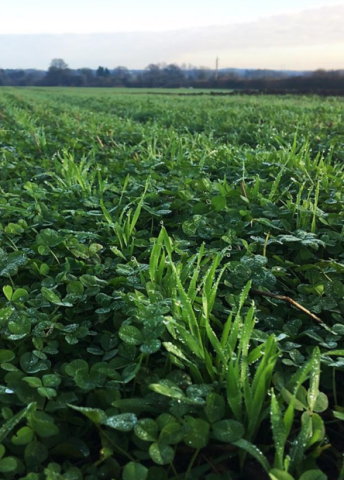Summary
Take home messages
- The Living mulches practice can provide excellent soil health benefits and an opportunity to reduce artificial inputs
- There is still work required to perfect the system and reduce the current yield penalty
- The system can be adopted both organically and non-organically
Context
Two key services that need to be delivered for agricultural systems to function productively are weed control and nitrogen supply. Non-organic systems rely heavily on costly herbicides and artificial fertiliser, whilst organic systems need an effective alternative to chemical inputs and a way to reduce tillage. With environmental sustainability in agriculture under increasing scrutiny, there is a drive for finding alternative options to the current systems. The use of (semi) permanent clover groundcover, also known as a living mulch, may provide an opportunity to provide key agricultural services and remedy some of the current environmental concerns.
Trial design
The trial design has a living mulch and control strip present within the same trial field. The trial mix is a 70:30 combination of small leaf and medium leaf clover. The trials so far have tested winter oats and rye as cash crops in the living mulch. Assessments were carried out across the growing season to determine the field performance of the cereal in the mulch and then yield and quality data was collected at harvest. Soil samples were also taken in the Autumn.
Findings
Results so far have found an average yield penalty of 30% in the living mulch compared to the control. There is also a move towards more aggressive perennial weeds in the living mulch as well as more grasses compared to broadleaved weeds. However, with increased clover cover in the second trial year, overall weed cover was reduced in the living mulch system. There are also several soil health benefits in the living mulch system, with significantly increased available nitrogen and earthworm counts and a trend for increased microbial activity and soil organic matter. There are several less easily quantified benefits to the system; reduced tillage, lengthening organic rotations, opportunity for reduced artificial inputs, and reduced leachates and run-off.
Recommendations & next steps
We are only beginning to scratch the surface of how to best implement the Living Mulches system. The soil health benefits have been well documented but fine-tuning the approach is still required to minimise the yield penalty. There are 5 key areas for further research to optimise the system: Mulch species & variety selection, Cash crop species & variety selection, Mulch management and establishment date, Breeding of mulch and cash crop varieties for living mulch systems.
View the full report HERE



